I finally finished toning for the first third of Small Shen, and am taking a week off so I can work on a short story for a Bento Comics anthology. This month has really flown by… it’s 2012, but I’m wondering where all the time has gone.
I also noticed that I haven’t made a Recommendation for a while, so I’m recommending a no-brainer manga-but-not-quite today: Nausicaa of the Valley of the Wind.
Nausicaa of the Valley of the Wind (manga)
(1982-1994, Hayao Miyazaki)
If you’re familiar with the work of Studio Ghibli, then you probably know that Nauscaa of the Valley of the Wind was the studio’s first full-length animated movie (a big success for the time). What many may not know is that the director of the film, Hayao Miyazaki, actually started the story as a serialised manga, and continued to write/draw the manga over a period of 12 years, long after the animated film was finished and screened. The end result is two separate stories that start the same, are different lengths, and also end vastly differently. Needless to say, due to the length of the manga, the themes tackled in it are alot more complex than it was in the animated film.
Plot
Nausicaa of the Valley of the Wind is set in a post-apocalyptic world, where massive pollution has rendered much of the air poisonous to humans, and giant insects ruled the world. What’s left of humanity huddle together in tiny pockets, constantly at war with each other and with the denizens of the insect world. Much of this world is covered by a gigantic, poisonous forest known as the Sea of Corruption, where much of the giant insects live, but where the humans need to don gas masks to survive.
In this setting lives the main character Nausicaa, who is the princess of a small coastal kingdom called the Valley of the Wind. The sea air protects this little hamlet from the poisonous air, but trouble comes when an aircraft full of refugees escaping from the powerful kingdom of Torumekia crashes near the Valley. The aircraft was carrying precious cargo – a stone that can activate a powerful biotech monster that the Torumekians were planning to use (possibly against their arch-enemies, the Doroks). When the stone comes into Nausicaa’s posession, she becomes drawn into the battle between the Torumekians and the Doroks, under the command of Princess Kushana of Torumekia.
Why I Recommend this Manga
Well, it’s Hayao Miyazaki’s work. What more can I say? The man has crafted a complex eco-fable here, a highly-enjoyable piece of science fiction irregardless of which side of the global-warming fence you’re from. Perhaps the biggest joy for me was to read more about the characters I knew as a child from the animated film, and appreciate how Miyazaki was able to carve two different-but-similar stories from the same mould, each being self-contained and with a satisfactory ending. For that reason, I suggest watching the 2-hour animated film first, then reading the manga. The manga fleshes out fully what the animated film cannot, due to time constraints.
Apart from the complex story, the art is also worth a big mention. Animators always make interesting manga artist, probably because their methodology of story-telling comes from a slightly different place from those who only draw manga. I find the sequential art of animators simultaneously more complex and simple than that of manga artists. By that, I mean that while their character and world designs tend to be more simple, the way they place their characters and the details they place in their environment tend to be more complex. Miyazaki’s work is a perfect example of this.
If you’re familiar with his style, then you’ll know the man’s not particularly great at drawing faces. He has a simple style that is adequate for distinguishing different people, but that’s about it. Where he truly excels, is in his backgrounds, which are present in nearly every panel. Animators-turned-manga-artists almost never do the “character floating in a void” thing that some manga artists do. There’s also the incredible detail on the planes, the machines, the dress, the flora and giant insects that inhabit this fantasy world. The characters don’t have an awful lot of complex clothing designs on them, but they’re designed in a way that lets you know, at a glance, what faction they’re from. Either way, I have no complaints about his art.
His story-telling is also worth mentioning, since there is so much stuff happening on each page that it hardly feels like a Japanese manga. Infact, his style seems more similar to European styles, where the cinematic quality is in the detail of the individual panels, not so much in the panel-to-panel transitions. This gives the feeling of an extremely-compressed story, which may take some time to get used to. While I wouldn’t do this kind of story-telling myself, I must mention that it’s not at all a bad thing, because it’s consistent. Miyazaki is a consistent story-teller, and while things may get confusing in action sequences, there’s never any mistake about where he’s heading with the story.
All-in-all, there isn’t much more praise I can heap on Hayao Miyazaki, whether his work is in film or on the page. It’s just a matter of find his work to read, in a form that does justice to the details in his artwork. My Nausicaa books is printed in A5 format, which is smaller than I recommend. This work was originally printed in A4 format, which I believe is the best format to read it in. If possible, I suggest you find the bigger size.

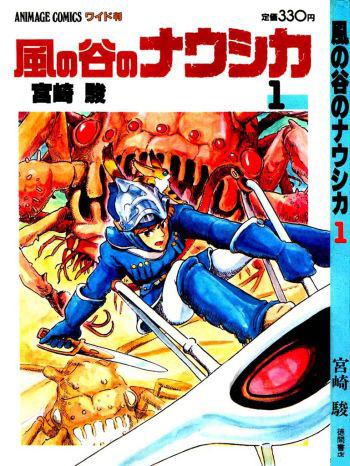
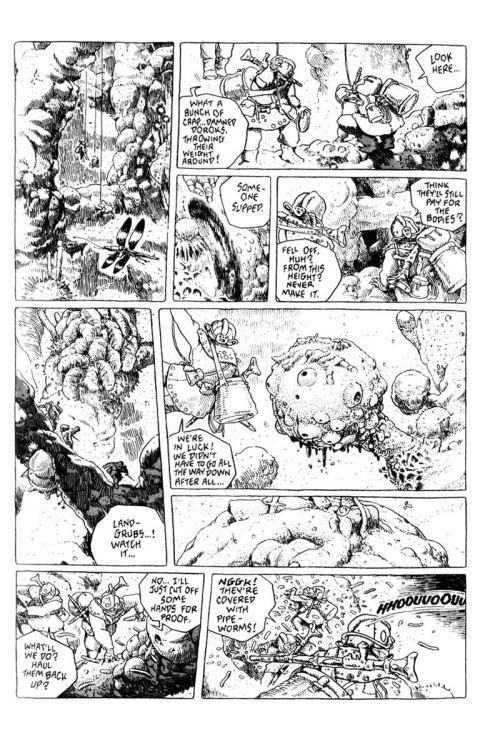
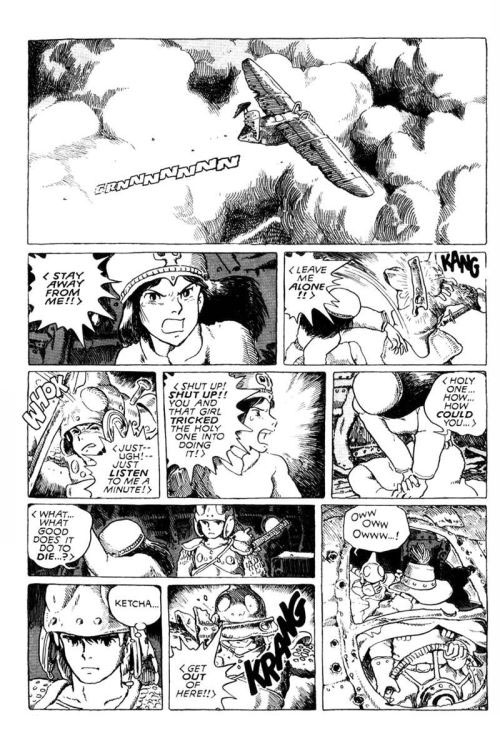
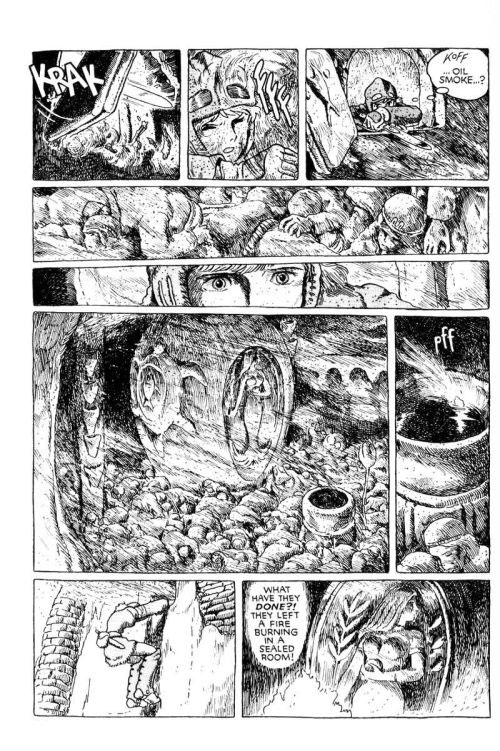
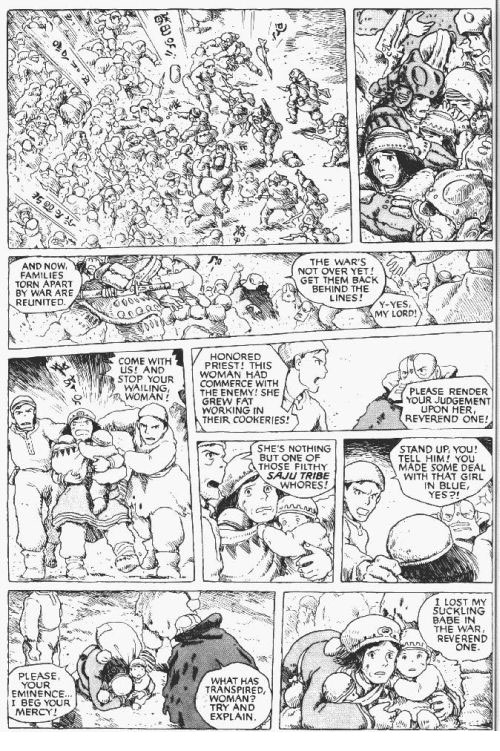
Hi Queenie,
I agree, this manga is amazing! I found it in much the same way, after seeing the Ghibli film. And I was blown away, I loved how much more detail in terms of world-building and story, there was in the books.
Excited to see what you do for the Cordite artwork too
Thanks! 😀